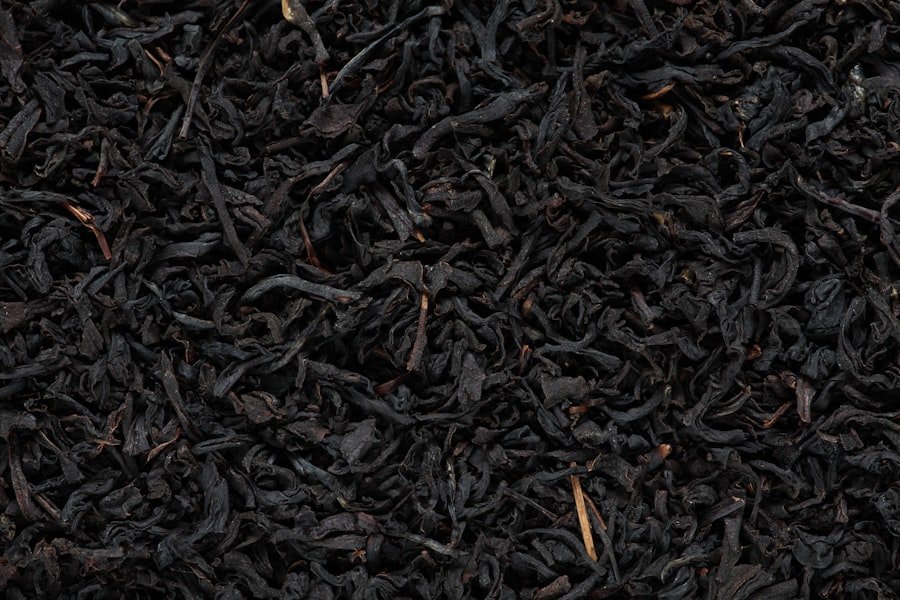Tea has a long and rich history in China, dating back thousands of years. Legend has it that tea was discovered by the Chinese Emperor Shen Nong in 2737 BC when tea leaves accidentally fell into his boiling water. Since then, tea has become an integral part of Chinese culture, with its consumption and preparation being highly valued and deeply ingrained in everyday life.
Tea holds a special place in Chinese culture, not only for its taste and aroma but also for its symbolic and spiritual significance. It is often seen as a symbol of hospitality, friendship, and respect. In Chinese society, offering tea to guests is a common practice to show warmth and hospitality. Additionally, tea is believed to have various health benefits and is often used in traditional Chinese medicine.
Table of Contents
ToggleThe Importance of Vocabulary in Understanding Tea Culture
Understanding the vocabulary associated with tea culture is essential for fully appreciating and immersing oneself in the world of Chinese tea. Key terms and phrases related to tea culture include “gongfu cha” (the traditional Chinese tea ceremony), “yixing teapot” (a type of clay teapot used for brewing tea), “chadao” (the way of tea), and “cha qi” (the energy or essence of tea).
By familiarizing oneself with these terms, one can gain a deeper understanding of the rituals, techniques, and traditions associated with Chinese tea culture. This knowledge enhances the appreciation of tea as more than just a beverage but as an art form and a way of life.
Basic Tea Types and Their Characteristics
China is known for producing a wide variety of teas, each with its own unique characteristics and flavors. The major types of Chinese tea include green tea, black tea, oolong tea, white tea, and pu-erh tea.
Green tea is the most common type of tea in China and is known for its fresh, grassy flavor and high antioxidant content. Black tea, on the other hand, is fully oxidized and has a stronger, bolder flavor. Oolong tea falls somewhere in between green and black tea, with a partially oxidized leaf and a range of flavors from floral to fruity.
White tea is the least processed of all teas and is known for its delicate flavor and subtle sweetness. Pu-erh tea is a fermented tea that undergoes aging, resulting in a rich, earthy flavor and unique health benefits.
Tea Processing Methods and Their Impact on Flavor
The flavor and aroma of tea are greatly influenced by the processing methods used. The four main steps in tea processing are withering, rolling, oxidation, and firing.
Withering involves allowing the freshly picked tea leaves to wilt and lose moisture. This step helps to remove excess water from the leaves and prepare them for further processing. Rolling is the process of shaping the leaves into their desired form, whether it be twisted, curled, or rolled into balls.
Oxidation is a crucial step in determining the flavor of the tea. Green teas are minimally oxidized, while black teas are fully oxidized. Oolong teas fall somewhere in between, with varying degrees of oxidation depending on the desired flavor profile.
Firing is the final step in tea processing and involves heating the leaves to stop the oxidation process. This step helps to preserve the flavor and aroma of the tea.
The Significance of Tea Brewing and Serving Techniques
Proper brewing and serving techniques play a significant role in enhancing the tea-drinking experience. Chinese tea culture places great emphasis on the art of brewing and serving tea.
The water temperature, steeping time, and teaware used can greatly impact the flavor and aroma of the tea. For example, green teas are typically brewed at lower temperatures to preserve their delicate flavors, while black teas can withstand higher temperatures for a bolder taste.
Teaware, such as teapots and tea cups, are also important in Chinese tea culture. Yixing teapots, made from a special clay, are highly valued for their ability to enhance the flavor of the tea over time. The size and shape of the teacups can also affect the way the tea is enjoyed.
The Role of Tea Ceremony in Chinese Culture

Tea ceremonies have a long history in China and are an integral part of Chinese culture. These ceremonies are often seen as a way to connect with nature, promote mindfulness, and foster a sense of harmony and tranquility.
Traditional Chinese tea ceremonies, known as “gongfu cha,” involve a series of precise and deliberate movements, from rinsing the teaware to pouring the tea. These ceremonies are often performed with great care and attention to detail, creating a sense of ritual and reverence.
Tea ceremonies are not only a way to enjoy tea but also a way to cultivate one’s inner self and appreciate the beauty of nature. They provide a space for reflection, relaxation, and connection with others.
The Symbolism of Tea in Chinese Literature and Art
Tea holds great symbolic significance in Chinese literature and art. It is often used as a metaphor for various aspects of life, such as friendship, love, and personal growth.
In Chinese poetry, tea is frequently mentioned as a source of inspiration and a means to express emotions. It is often associated with tranquility, elegance, and the appreciation of nature. Tea is also depicted in traditional Chinese paintings, where it is used to convey a sense of harmony and balance.
The symbolism of tea in Chinese literature and art reflects its deep-rooted cultural significance and its ability to evoke emotions and convey deeper meanings.
The Health Benefits of Drinking Chinese Tea
In addition to its cultural significance, Chinese tea is also known for its numerous health benefits. Scientific research has shown that tea contains antioxidants, polyphenols, and other bioactive compounds that can help boost the immune system, improve digestion, and reduce the risk of chronic diseases.
Green tea, in particular, has been extensively studied for its potential health benefits. It has been found to have anti-inflammatory, anti-cancer, and neuroprotective properties. Black tea has also been shown to have cardiovascular benefits and may help lower cholesterol levels.
While more research is needed to fully understand the health benefits of Chinese tea, its long history of use in traditional Chinese medicine suggests that it has a positive impact on overall health and well-being.
The Etiquette of Tea Drinking in China
Tea drinking in China is not just about the beverage itself but also about the rituals and etiquette that surround it. Proper etiquette is highly valued in Chinese tea culture and is seen as a way to show respect and appreciation for the tea and the person serving it.
When drinking tea in China, it is important to hold the teacup with both hands as a sign of respect. It is also customary to take small sips and avoid slurping or making loud noises while drinking. When someone pours tea for you, it is polite to tap your fingers on the table as a way to express gratitude.
Additionally, it is considered impolite to refuse an offer of tea or to leave an empty teacup. These customs reflect the importance of respecting cultural norms and traditions when engaging in tea-drinking rituals.
Exploring the Diversity of Chinese Tea Culture through Vocabulary
Chinese tea culture is incredibly diverse, with different regions having their own unique traditions, rituals, and vocabulary associated with tea. By learning tea-related vocabulary, one can gain a deeper understanding of these regional variations and appreciate the richness and diversity of Chinese tea culture.
For example, in the southern province of Fujian, oolong tea is highly prized, and the term “rock tea” is used to describe teas grown in the rocky mountainous terrain of the region. In the northern province of Yunnan, pu-erh tea is the specialty, and the term “sheng” is used to describe raw pu-erh tea, while “shou” is used to describe fermented pu-erh tea.
By exploring the vocabulary associated with different types of tea and their regional variations, one can gain a deeper appreciation for the cultural and geographical influences on Chinese tea culture.
Chinese tea culture is a rich and diverse tradition that has been passed down through generations. Understanding the history, vocabulary, and rituals associated with Chinese tea culture is essential for fully appreciating and immersing oneself in this ancient art form.
By learning about the different types of tea, their processing methods, brewing techniques, and cultural significance, one can gain a deeper understanding of Chinese tea culture and enhance their enjoyment of this beloved beverage. Furthermore, understanding Chinese tea culture can also foster cultural exchange and appreciation between different cultures.
Whether you are a tea enthusiast or simply curious about Chinese culture, delving into the world of Chinese tea can be a rewarding and enlightening experience. So sit back, relax, and enjoy a cup of Chinese tea as you embark on a journey through centuries of tradition and culture.
If you’re interested in learning more about Chinese culture, you might also enjoy this article on Chinese Traditional Clothing. It provides a comprehensive guide to traditional Chinese attire and is a great resource for anyone looking to delve deeper into the rich cultural heritage of China. Check it out here.








